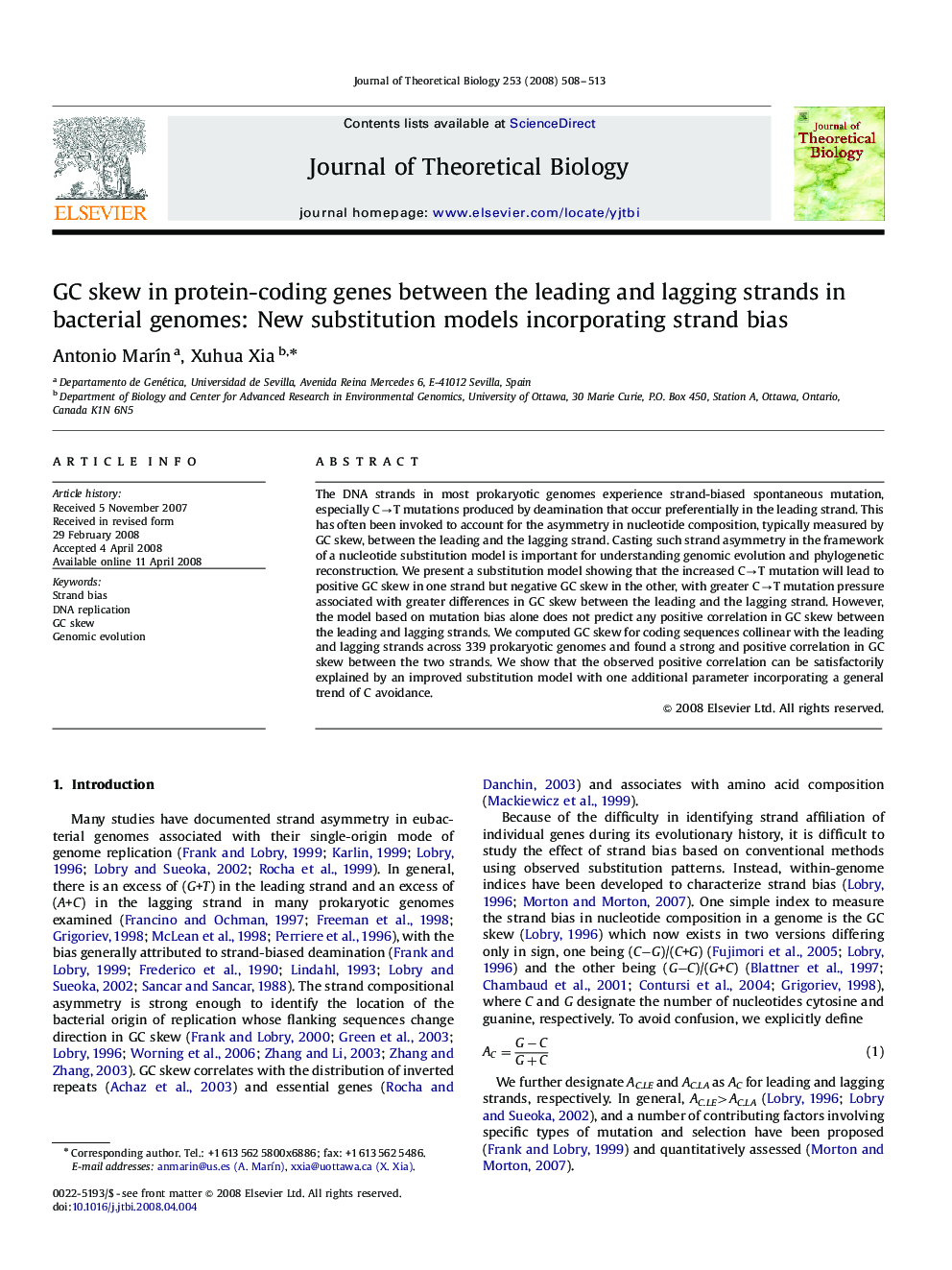| Article ID | Journal | Published Year | Pages | File Type |
|---|---|---|---|---|
| 4498275 | Journal of Theoretical Biology | 2008 | 6 Pages |
Abstract
The DNA strands in most prokaryotic genomes experience strand-biased spontaneous mutation, especially CâT mutations produced by deamination that occur preferentially in the leading strand. This has often been invoked to account for the asymmetry in nucleotide composition, typically measured by GC skew, between the leading and the lagging strand. Casting such strand asymmetry in the framework of a nucleotide substitution model is important for understanding genomic evolution and phylogenetic reconstruction. We present a substitution model showing that the increased CâT mutation will lead to positive GC skew in one strand but negative GC skew in the other, with greater CâT mutation pressure associated with greater differences in GC skew between the leading and the lagging strand. However, the model based on mutation bias alone does not predict any positive correlation in GC skew between the leading and lagging strands. We computed GC skew for coding sequences collinear with the leading and lagging strands across 339 prokaryotic genomes and found a strong and positive correlation in GC skew between the two strands. We show that the observed positive correlation can be satisfactorily explained by an improved substitution model with one additional parameter incorporating a general trend of C avoidance.
Related Topics
Life Sciences
Agricultural and Biological Sciences
Agricultural and Biological Sciences (General)
Authors
Antonio MarÃn, Xuhua Xia,
